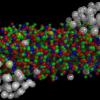

billiards
Senior Members-
Posts
173 -
Joined
-
Last visited
Content Type
Profiles
Forums
Events
Everything posted by billiards
-
As an observer of this thread, I would say Wild Cobra is doing a very bad job of debunking AGW, and a very good job of showing how weak the anti-AGW camp really is.
-

Plate tectonics relation to Earthquakes.
billiards replied to Dr. Funkenstein's topic in Earth Science
More soapboxing, I'm pretty sure there are forum rules against this sort of thing. Has this guy ever even read a book? -

Plate tectonics relation to Earthquakes.
billiards replied to Dr. Funkenstein's topic in Earth Science
I have a problem with this. I guess preface it with "According to Robittybob1 ...". End it with: "However, Robittybob1 apparently does not understand the nature of tidal forces. Indeed, tidal forces are not capable of displacing the inner core relative to the bulk Earth and therefore can be safely neglected." -

Plate tectonics relation to Earthquakes.
billiards replied to Dr. Funkenstein's topic in Earth Science
Good find. Certainly the quality of this work is significantly better than the previous arXiv paper! I guess it's a shame this hasn't made it past peer review, which does raise questions.... One question I have with this is that the modelled PKIKP residuals vary smoothly with epicentral distance, however, I think the observations show a sharp change in the residual. Also this paper does not bother to model normal modes, which really would be necessary to "seal the deal". One might be interested to read a recent (and surprisingly concise) review of inner core observations: Deuss, A. (2014). Heterogeneity and Anisotropy of Earth's Inner Core. Annual Review of Earth and Planetary Sciences, 42(1), 103–126. doi:10.1146/annurev-earth-060313-054658 -

Plate tectonics relation to Earthquakes.
billiards replied to Dr. Funkenstein's topic in Earth Science
Hey hey hey calm down ... I said I do not intend to spoon feed you. As far as I'm concerned you can eat what you want. If you think the paper is right, good for you! I personally don't care what you believe, I could see the paper was crank before I finished reading the abstract. Personally I think I understand my own thought slightly better than you understand my thoughts, but that's just my perspective! -

Plate tectonics relation to Earthquakes.
billiards replied to Dr. Funkenstein's topic in Earth Science
Perhaps you should do a bit of reading to build on those schematic diagrams. I do not intend to spoon feed you. -
RE plant's as carbon sinks. Note 1). Increasing plants has the unfortunate consequence of reducing the planet's albedo. This would also contribute to global warming. Note 2). The current major carbon sink: the ocean, is doing a pretty good job of soaking up our emissions. (Still not "good enough" if you think that way.) However, this has the unintended consequence of reducing the ocean's PH. i.e. the ocean is increasing in acidity. This has major implications for many marine ecosystems, especially those that build thin calcium-carbonate shells that are vulnerable to dissolve with even slight changes in ocean acidity. Bottom line, we have to reduce emissions. RE carbon is anthropogenic. Note 1) CO2 concentration is accelerating (MacFarling Meure et al. 2006). Obviously this would be expected given increasing emissions. Note 2) O2: N2 is decreasing (Keeling et al., 1996). This indicates that O2 is being used up, which is consistent with a combustion process. Note 3) Concentration of isotope 13C is increasing relative to 14C. 13C comes from terrestrial "fossil fuel" sources which are low in 14C because it radioactively decays. (Suess, 1955; Stuiver and Quay, 1981; Keeling et al, 1989; Levin and Kromer, 1997). Again, pointing the finger at anthropogenic source.
-

Plate tectonics relation to Earthquakes.
billiards replied to Dr. Funkenstein's topic in Earth Science
A "better" criticism. Jeez. Do I work for you or something? Google tidal force. Notice these kinds of images. Basically, when the planet gets pulled by gravity towards the moon, the whole planet moves, including the inner core. Notice that things at the centre stay at the centre. The centre does not move. The inner core does not move from the centre. -

Plate tectonics relation to Earthquakes.
billiards replied to Dr. Funkenstein's topic in Earth Science
If the physics predicts that the inner core (IC) is 60 km off centre then the physics is wrong. There really is no need to delve further than that. Why am I so sure that the IC is not 60 km off centre? Because seismologists who work routinely with both normal mode data and also IC reflected and traversing body wave data would have noticed it. One would observe normal mode splitting at characteristic frequencies, anomalous PKiKP travel times, anomalous PKIKP travel times all as a function of phases of the tides. None of these signals have been reported in light of IC displacement. Note that these effects would severely hamper seismologists working with these data types, and therefore they would have been noticed. (I say that as a qualified seismologist.) Also the physics seems wrong. The buoyancy force would tend to pull the dense inner core to a central position. Gravity would also pull the inner core towards the centre. It does seem odd to me that these are considered separately, as without gravity there would be no buoyancy and therefore I am not sure you can superpose these forces. i.e. buoyancy is the consideration of gravity (weight) in the context of the surrounding fluid. The author seems to think that these forces would conspire to push the inner core away from the centre, which seems plain wrong. Though, actually, the author does not consider the direction of these forces at all. This is as far as one needs to probe to see that this work is fatally flawed. Note in the abstract it is claimed that the analysis of "wavelet doublets" has found the inner core to be offset by 60 km, however that is not backed up anywhere in the paper. There are two seismology papers in the references that analyse wavelet doublets. Neither of these papers make this unsupported claim. Therefore the author is either severely deluded or willfully misguiding his audience. -

Plate tectonics relation to Earthquakes.
billiards replied to Dr. Funkenstein's topic in Earth Science
With respect you seem to be completely missing the point. Perhaps one could explain the super rotation of the inner core by elementary physics if the core is off centre. However, the inner core is not off centre. There is no seismology, or indeed any observational evidence, to suggest that the core is off centre. If your model requires the core to be off centre then it is wrong, plain and simple. A model must fit all the evidence, not just one piece. -

Plate tectonics relation to Earthquakes.
billiards replied to Dr. Funkenstein's topic in Earth Science
OK, but FYI I had read the previous correspondence and that paper, so your post was not helping me. Are you the author of this paper? The core is dense and therefore negatively buoyant. It is gravitationally unstable for it to be offset from the centre of the Earth. Tidal force do not change this situation. There is no observational evidence to support the offset hypothesis -- unless you can show me some (I'm waiting). Nobody of "any note" would waste time on this. -

Plate tectonics relation to Earthquakes.
billiards replied to Dr. Funkenstein's topic in Earth Science
Acme, I know you intend well, but I was not asking you. Besides, that "paper" contains no evidence to support the claim that the inner core is displaced from the centre. Nor do any of the papers in the references section of said paper. -

Plate tectonics relation to Earthquakes.
billiards replied to Dr. Funkenstein's topic in Earth Science
Which study claimed the 60 km inner core displacement? I have seen no study claim it. I cannot show a study wrong that does not exist. Please provide the citation. -

Plate tectonics relation to Earthquakes.
billiards replied to Dr. Funkenstein's topic in Earth Science
The problem here is that the inner core is not displaced 60 km toward the Moon (and/or the Sun). -

Plate tectonics relation to Earthquakes.
billiards replied to Dr. Funkenstein's topic in Earth Science
Dr Funkenstein, the Earth does not expand and contract seasonally. If it did this would be measurable (especially now we have satellites), someone would have noticed it and reported it by now. Nobody has. Secondly, if you believe there is a seasonal variation in earthquakes, this could be easily demonstrated by a histogram. Until I see such a histogram produced from a large dataset of earthquake events that meets scientific standards, I will believe the null hypothesis. -

Is video data enough to make any "scientific" consideration?
billiards replied to jeremyjr's topic in Speculations
Also the question is vague. What do you mean when you say `any "scientific" consideration'? -
Submitted!!
-
PhD thesis nearly nearly finished
-

Fun game/puzzle: Stump the clever bot
billiards replied to EquisDeXD's topic in Brain Teasers and Puzzles
What is your favourite sexual position? Hmm... Probably some form of meat. -
Wow hot off the press, that only came out yesterday! I wouldn't be so quick to say that the mystery of the starting mechanism has been explained. That's a very bold statement. It's a model (or set of models) and scientists will enjoy kicking it around for a while until it breaks. Whether in truth this is how plate tectonics started remains to be established.
-
Toroidal flow (?) around the Juan de Fuca slab, Western USA.
-
A key question for subduction dynamics is whether the mantle around the slab gets dragged down with the slab, or whether the slab is decoupled from the surrounding mantle. There is some pretty cool evidence that some times the mantle does decouple. For example there are toroidal patterns of anisotropy at some slab edges (Calabria, West USA, Kamchatka) that really looks like what you expect if the mantle is decoupling and flowing laterally parallel to the trench underneath the slab. In other words. When the slab sinks the mantle below it seems to be getting out of the way (by moving around the sides of the slab) to let this happen.
-
Ophiolite, I am talking about subduction. By that I mean a plate sinking down into the mantle. How else do you propose subduction could work? I assume you are listing the forces that drive plate motions? I consider subduction to be a form of thermal convection. So I guess I am not.
-
Interesting bit of research. New to me. Thanks for sharing. I think its significance is in tracking the water resource. If the uplift and downlift(?) cycle (which is pretty subtle, why it wasn't noticed before) has an effect on plate tectonics it is surely incidental. Furthermore every subduction zone is different. Many subducting plates are not subducting beneath a continent. Often subduction is of one ocean plate under another (ocean arc subduction). So this could not possibly be a global explanation. It is clear that subduction is driven by the negative buoyancy of the slab. It is buoyant (wants to float) to start off with, when it is young and hot (born at mid-ocean ridge). It cools down over 10s to 100s of millions of years, making it dense (negatively buoyant -- wants to sink). Then it subducts. This is convection in action. However, it is more complicated than considering the Stokes sinking of the slab. Bending of the plate, moving trenches, and the effects of lateral viscosity variations complicate matters immensely (http://www.ees.lehigh.edu/ftp/retreat/for_retreat/Becker&Faccenna%20review%20subduction.pdf). We still do not understand all the complexity we can observe.
-
BASICS: Convergent margins: where one plate goes under another and is "destroyed". Subduction zone is the three dimensional picture of a convergent margin. The plate goes down sinking into the mantle, it isn't destroyed, it just goes underground (deep). MAJOR IMPORTANCE: 1) Subduction is the primary mode of mantle convection. Plumes (if they exist) are of secondary importance. 2) Subduction drives plate tectonics. 3) Subduction controls the chemical and thermal evolution of the planet. -- positive spinoff: conditions for life, minerals for industry and our enjoyment -- negative spinoff: killer volcanoes and earthquakes. PROBLEM: Dynamics of subduction not understood. You can solve this one, then you get massive kudos. Effectively you turn plate tectonics from a kinematic theory to a dynamic theory. Nobel prize in geology (if it existed) coming your way. DISCUSSION: I strongly believe that if we understand subduction zones, then we can find the key to understanding plate tectonics. Mid ocean ridges are important too, but less so. Plumes are probably not that important either, although will help explain some anomalies.




